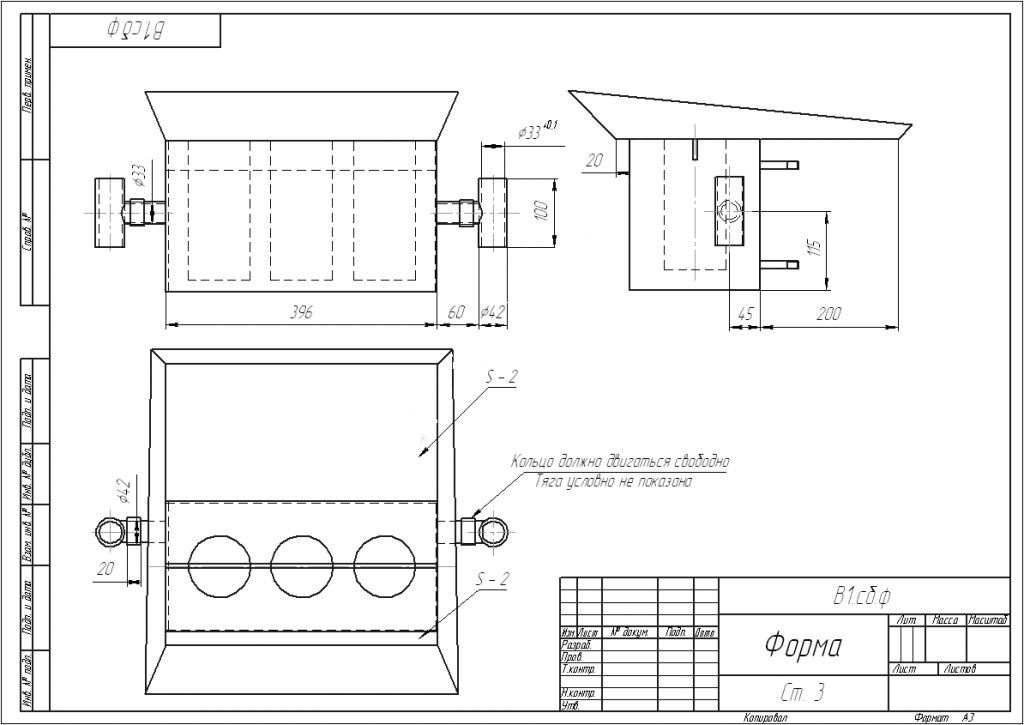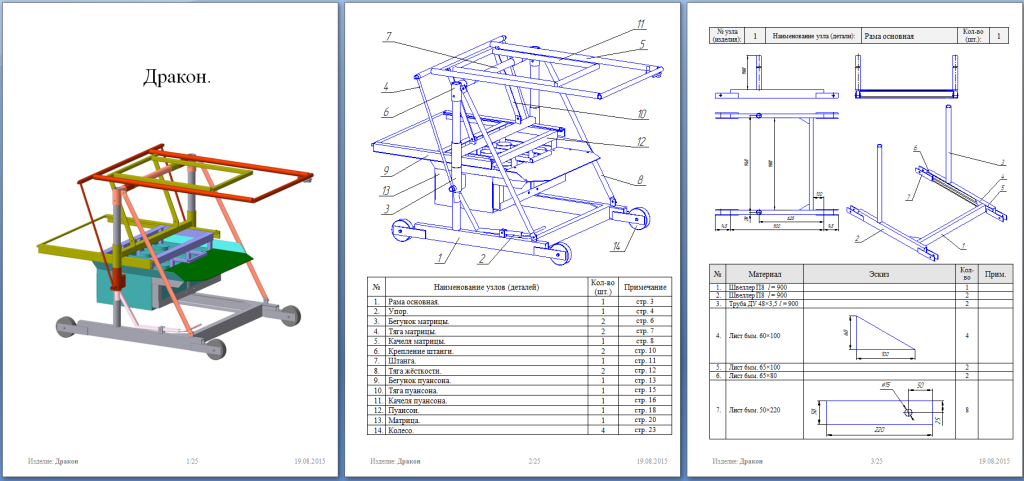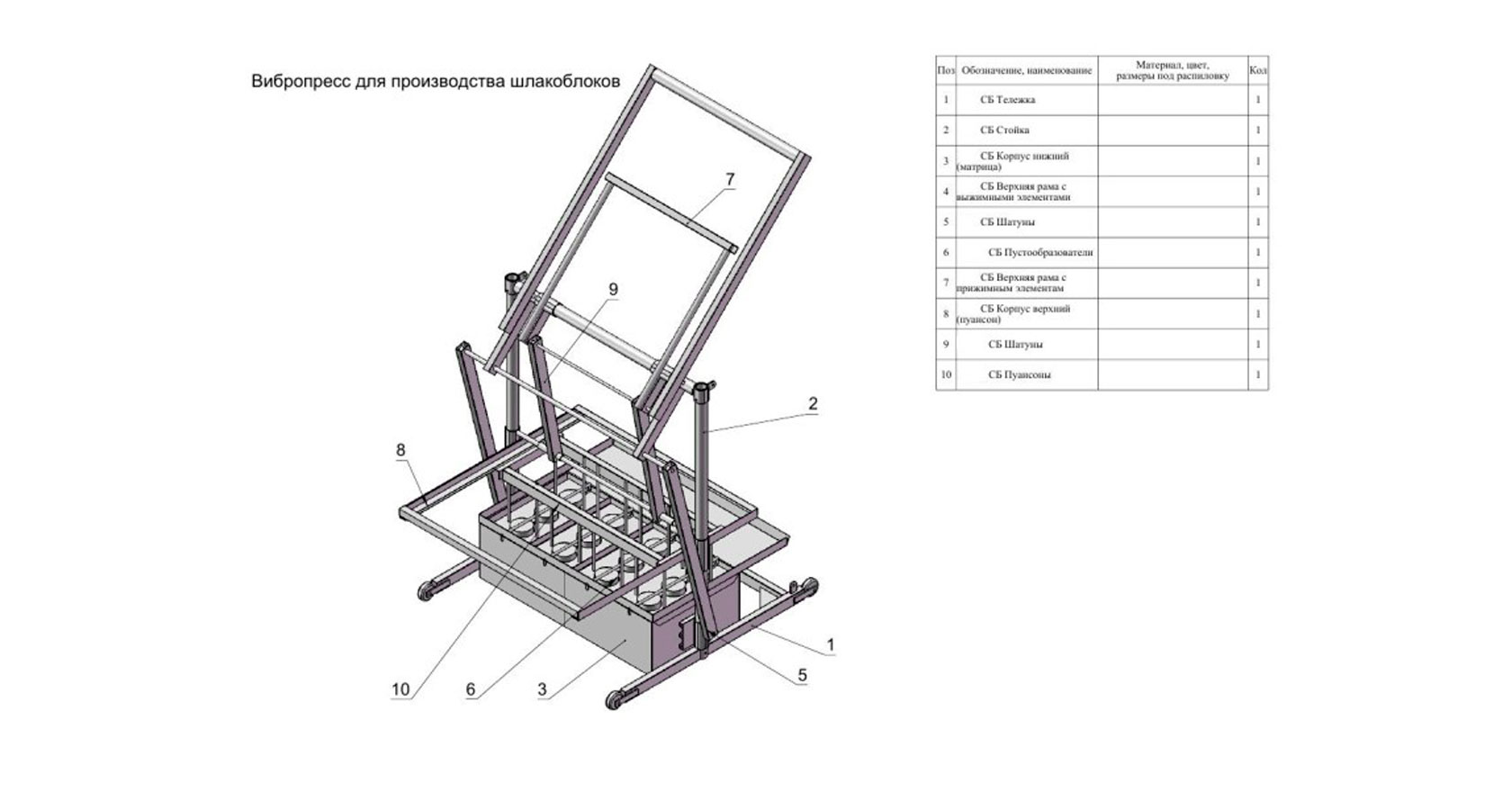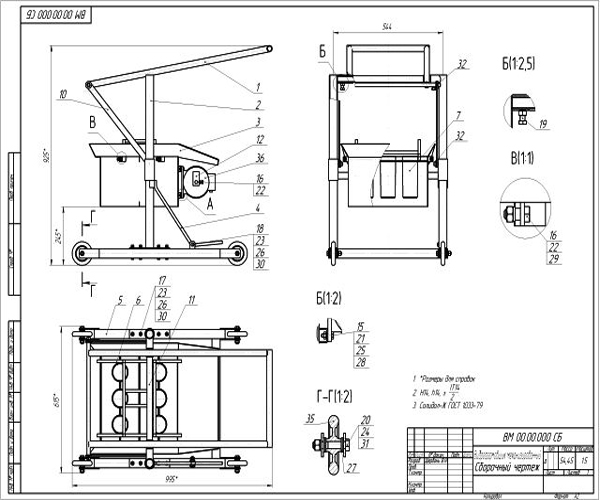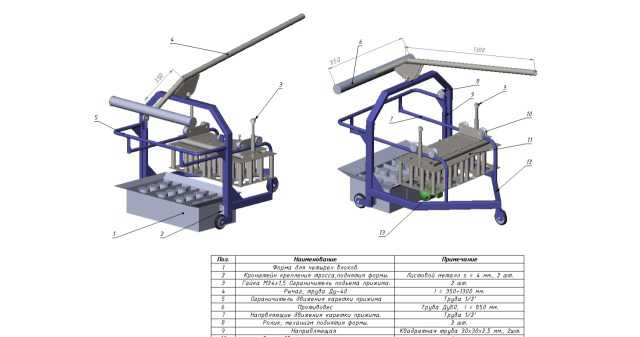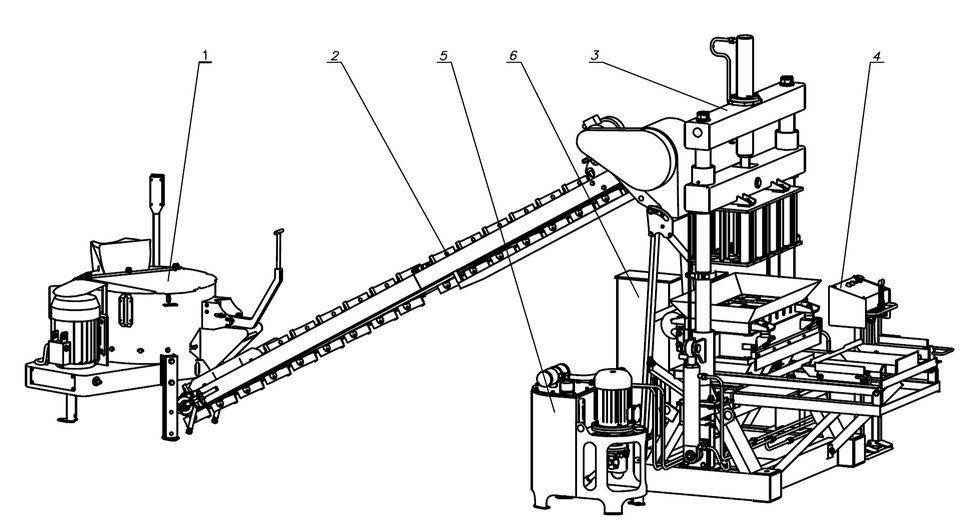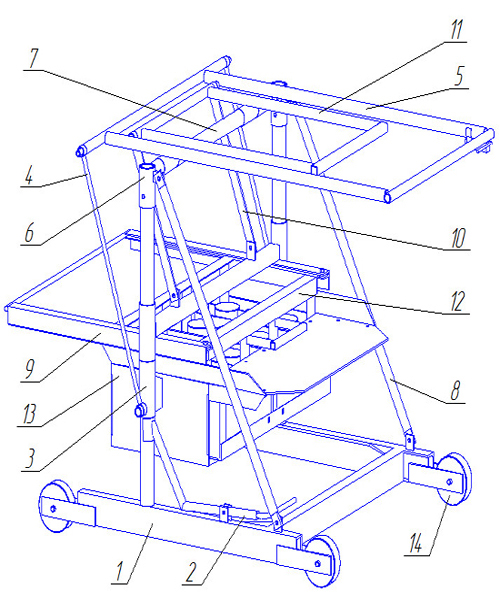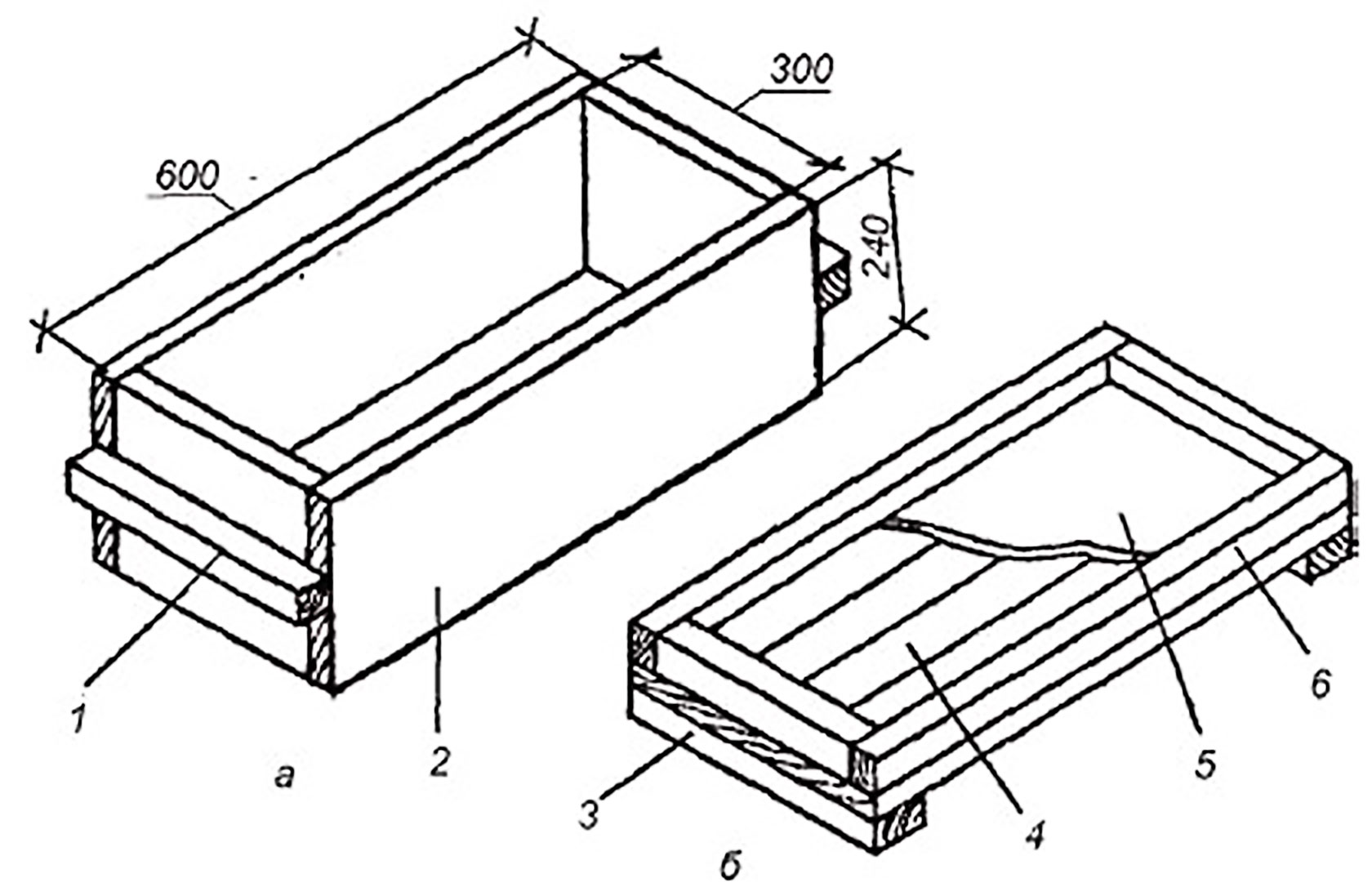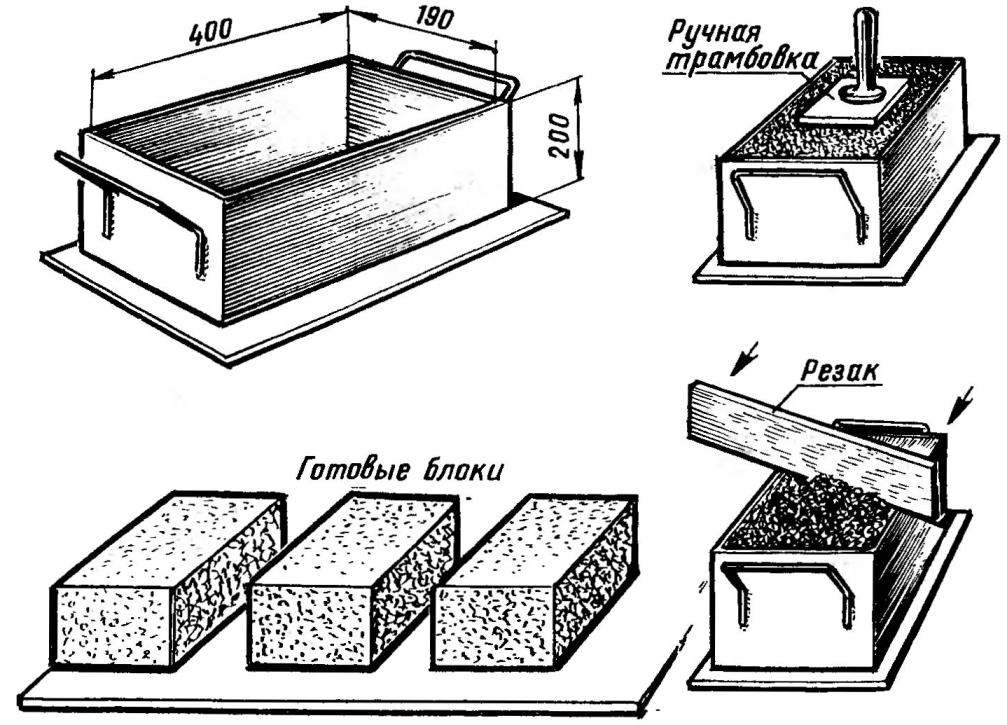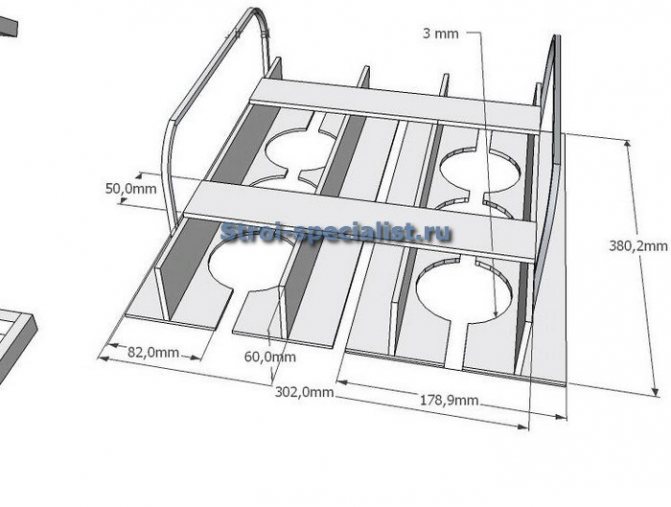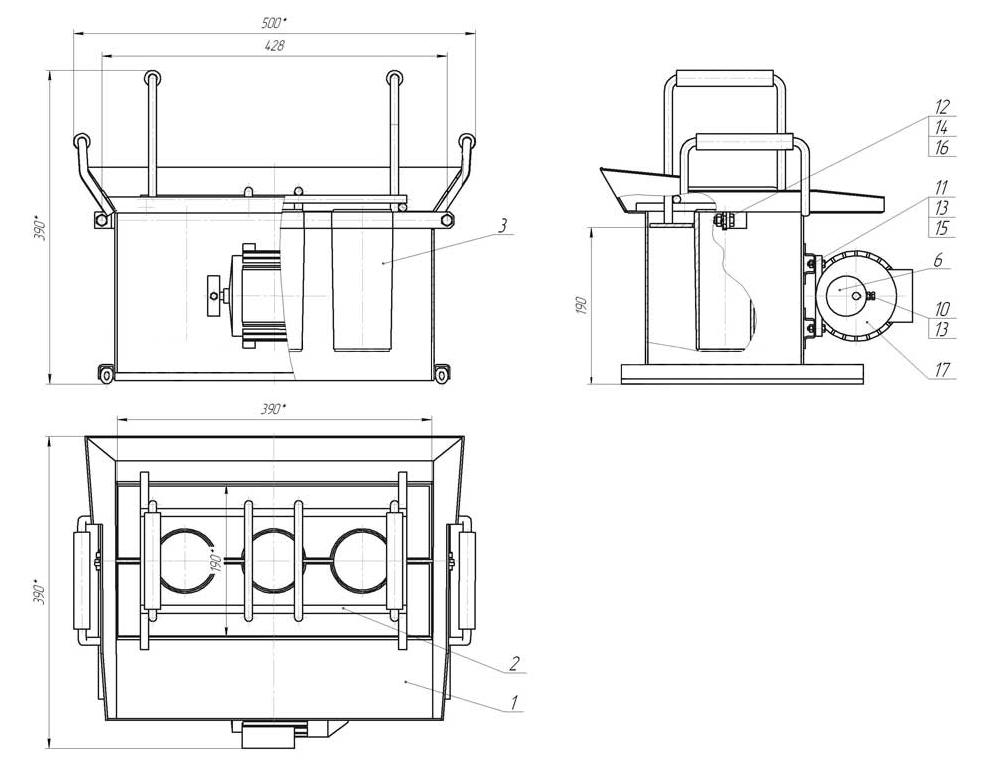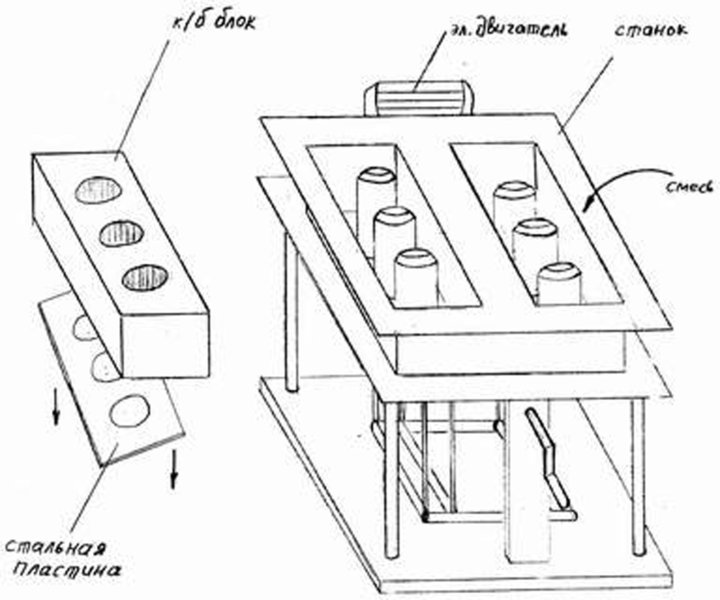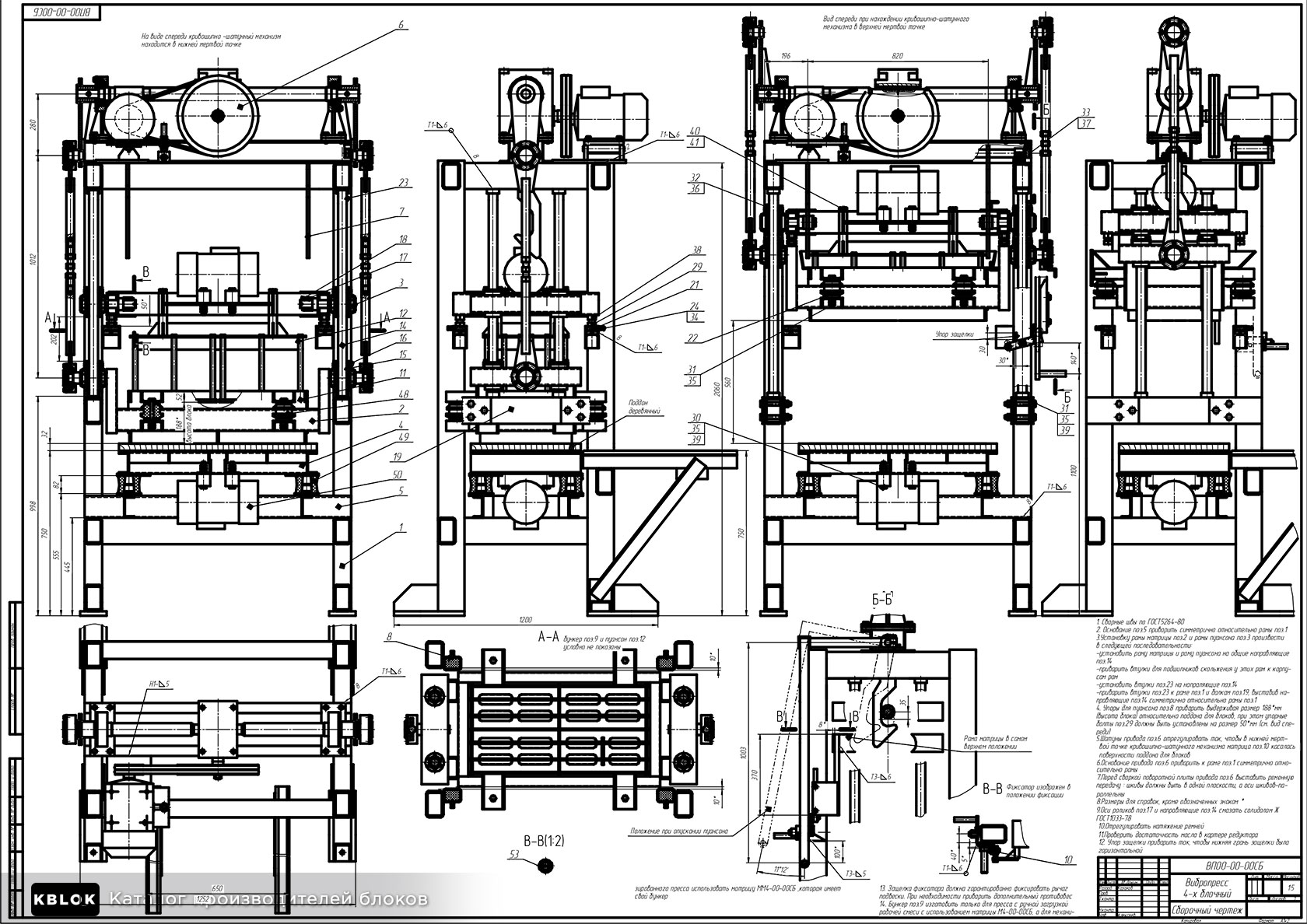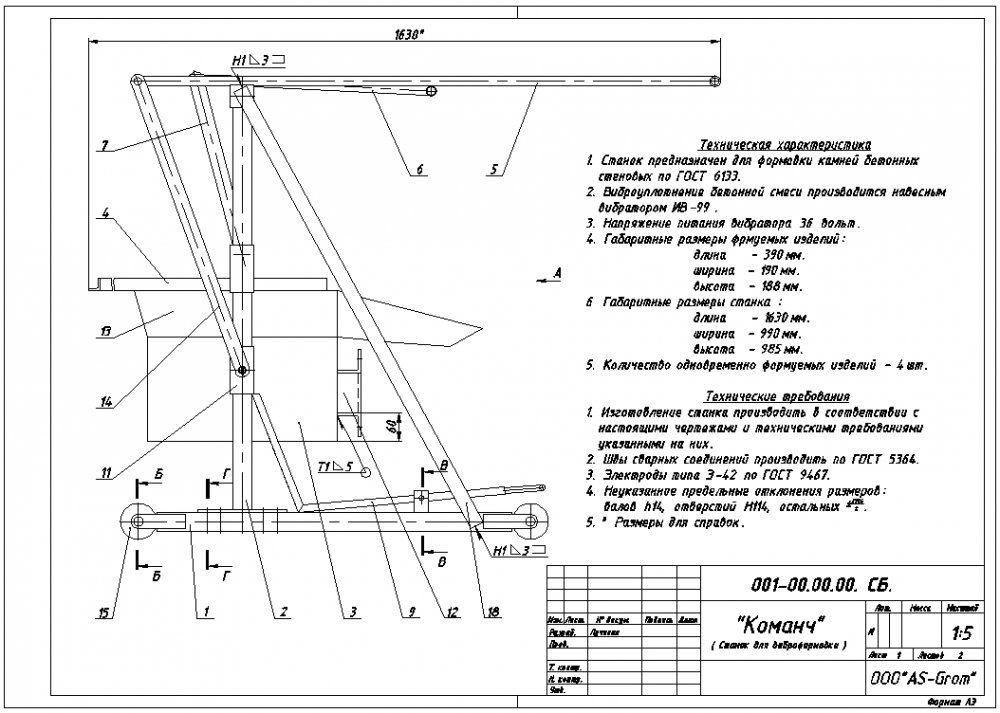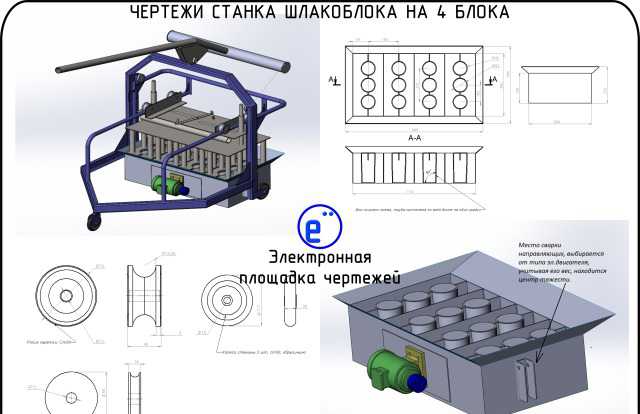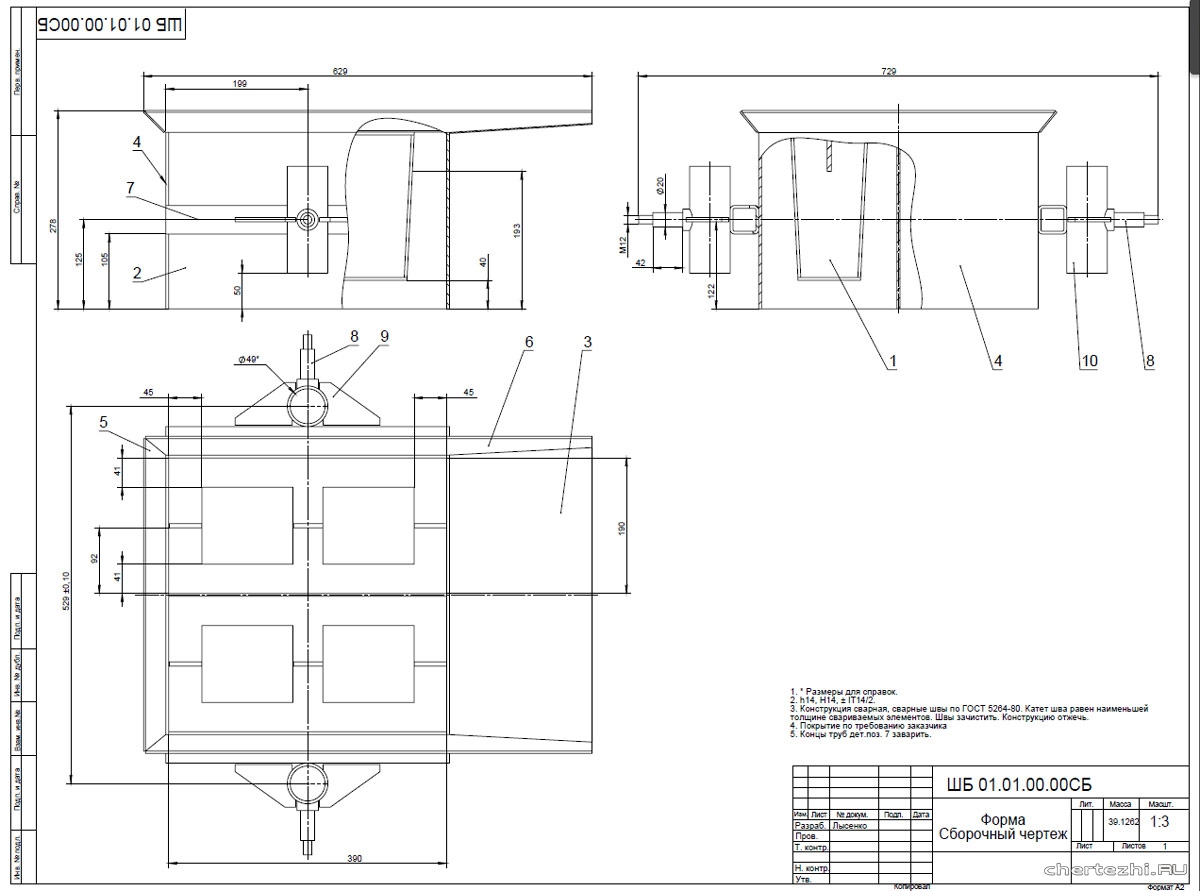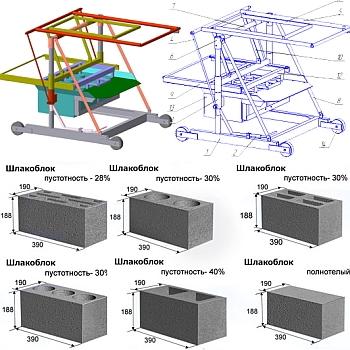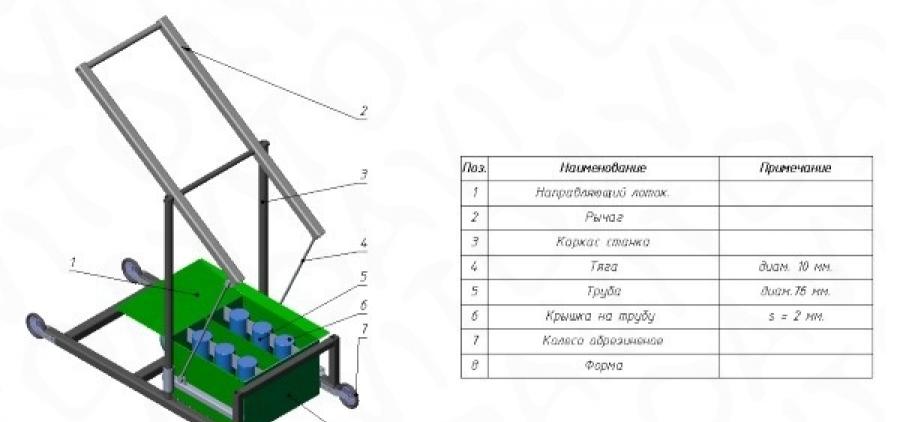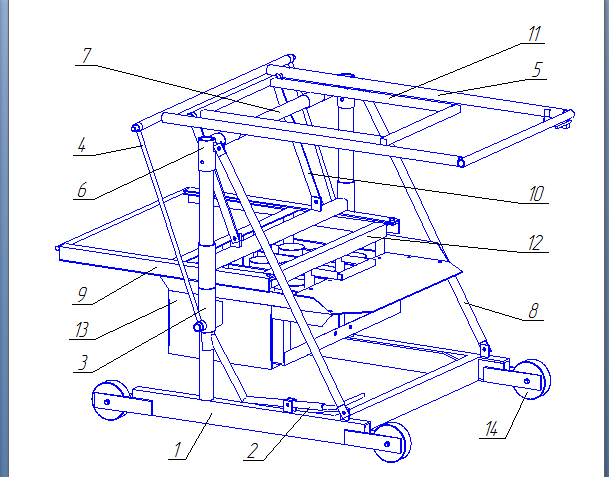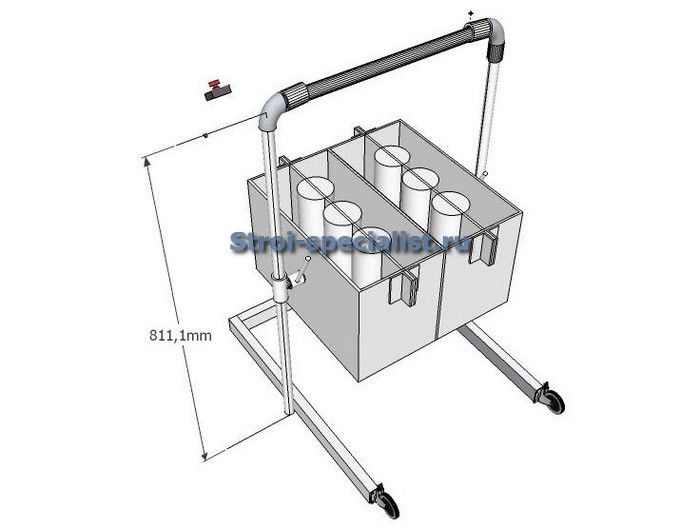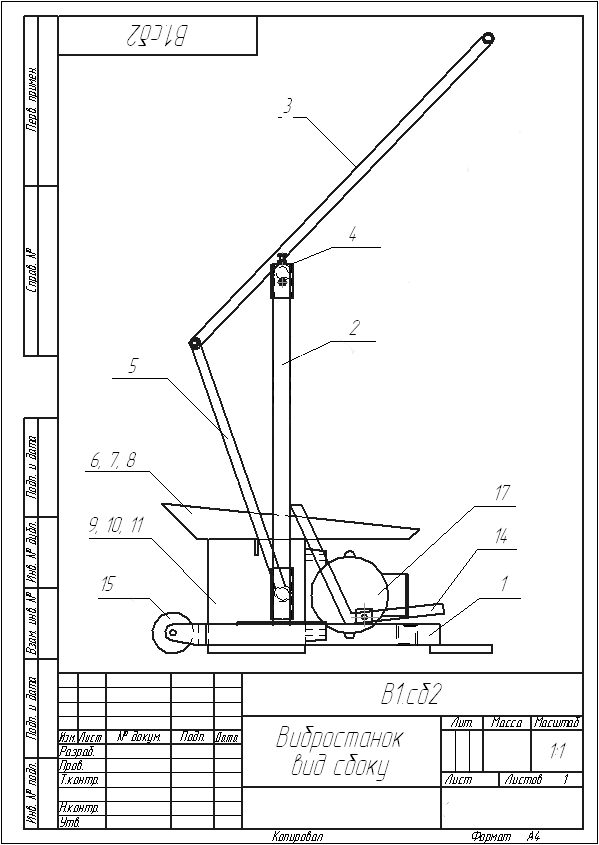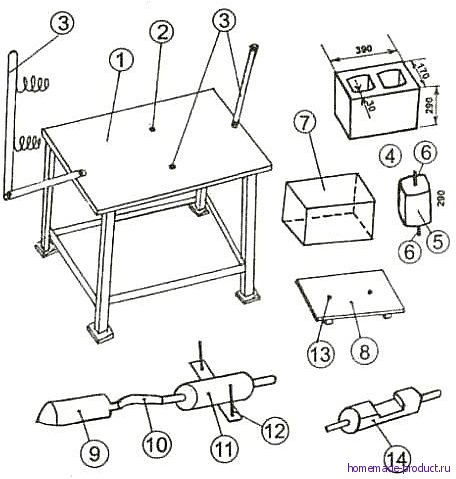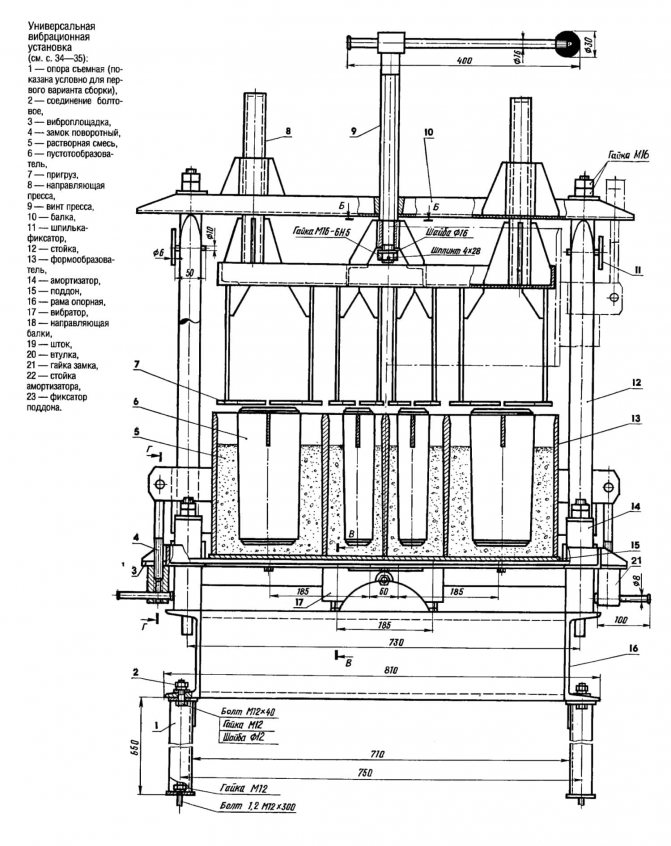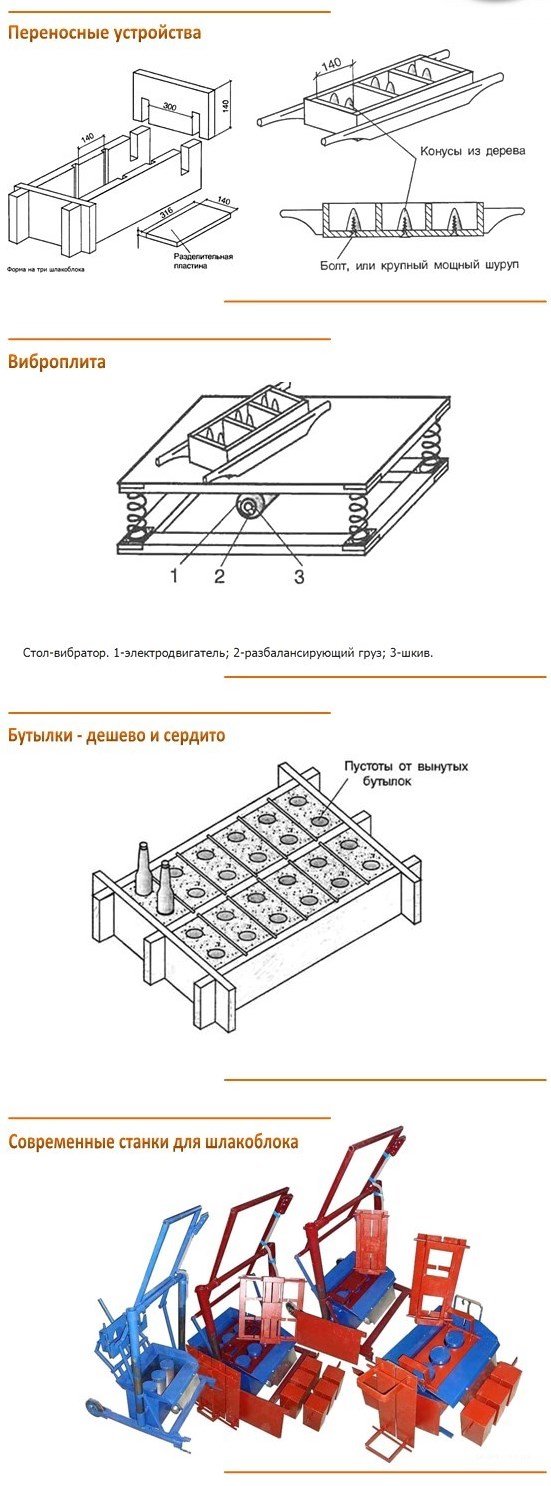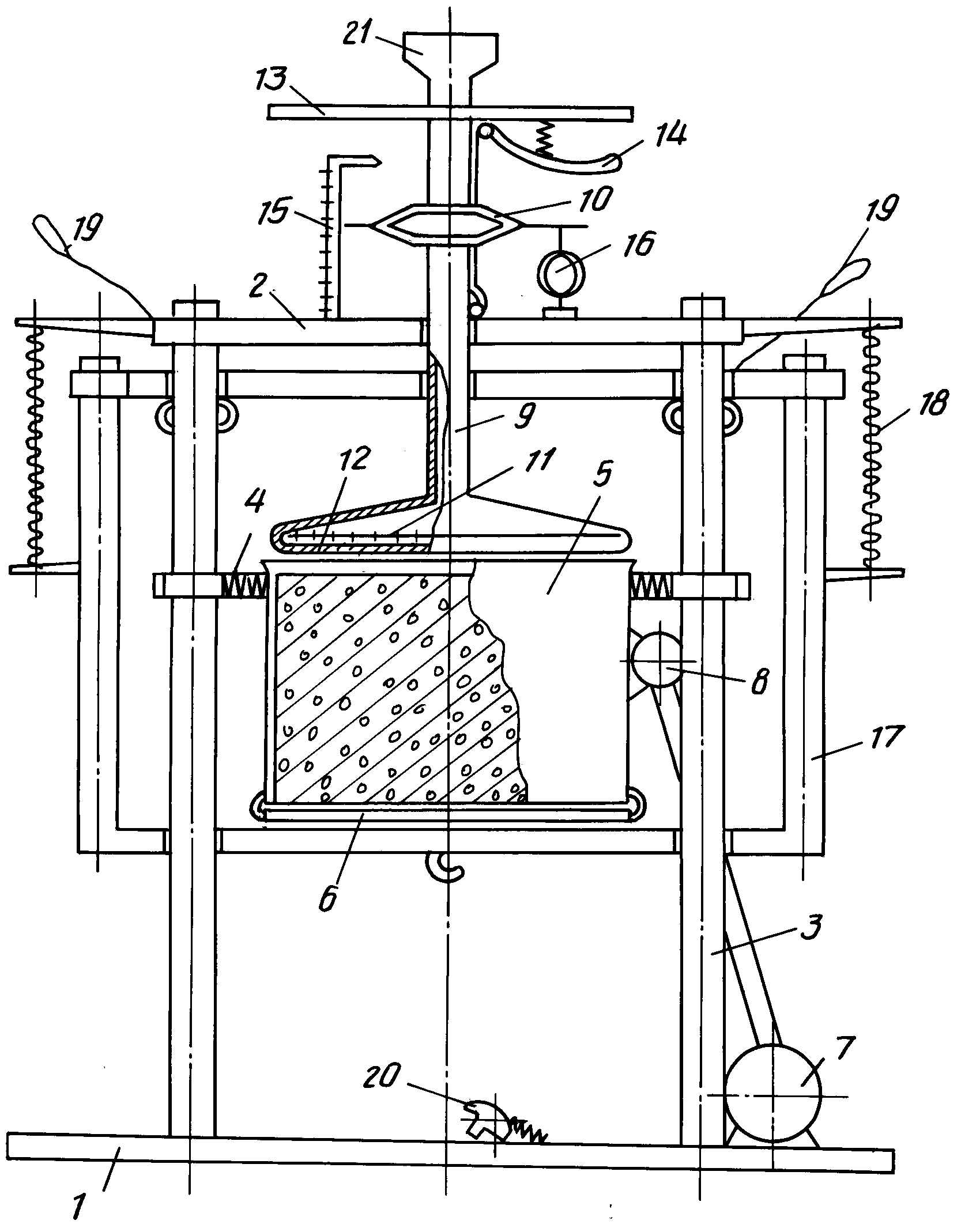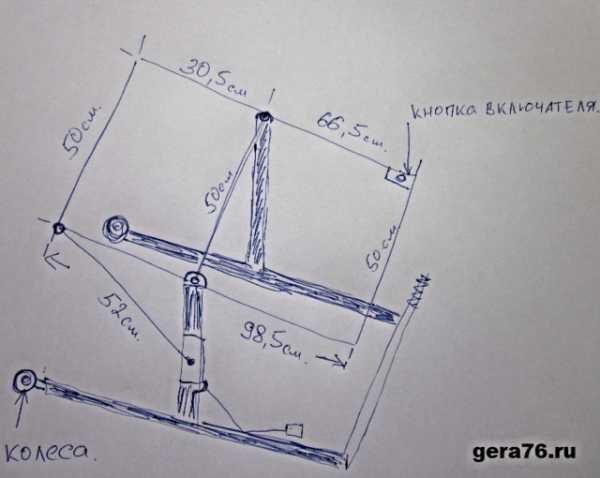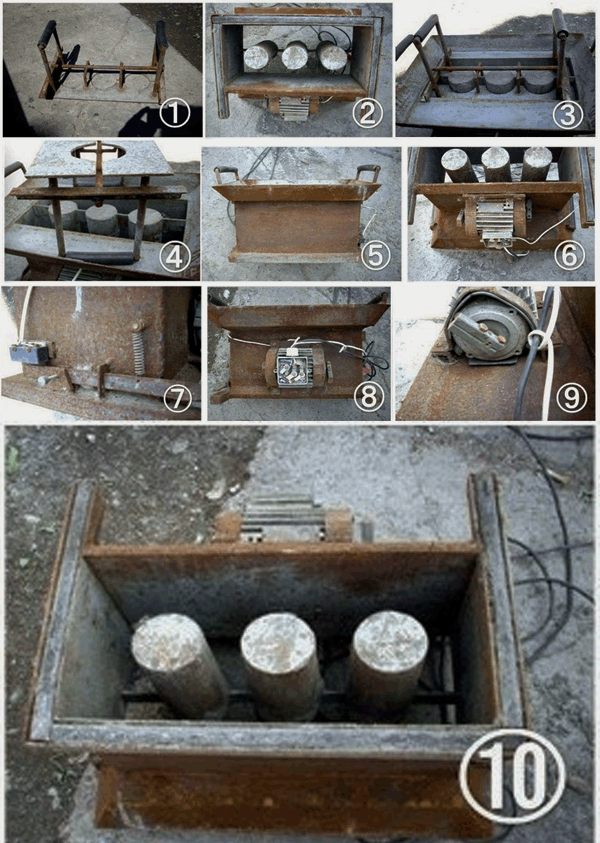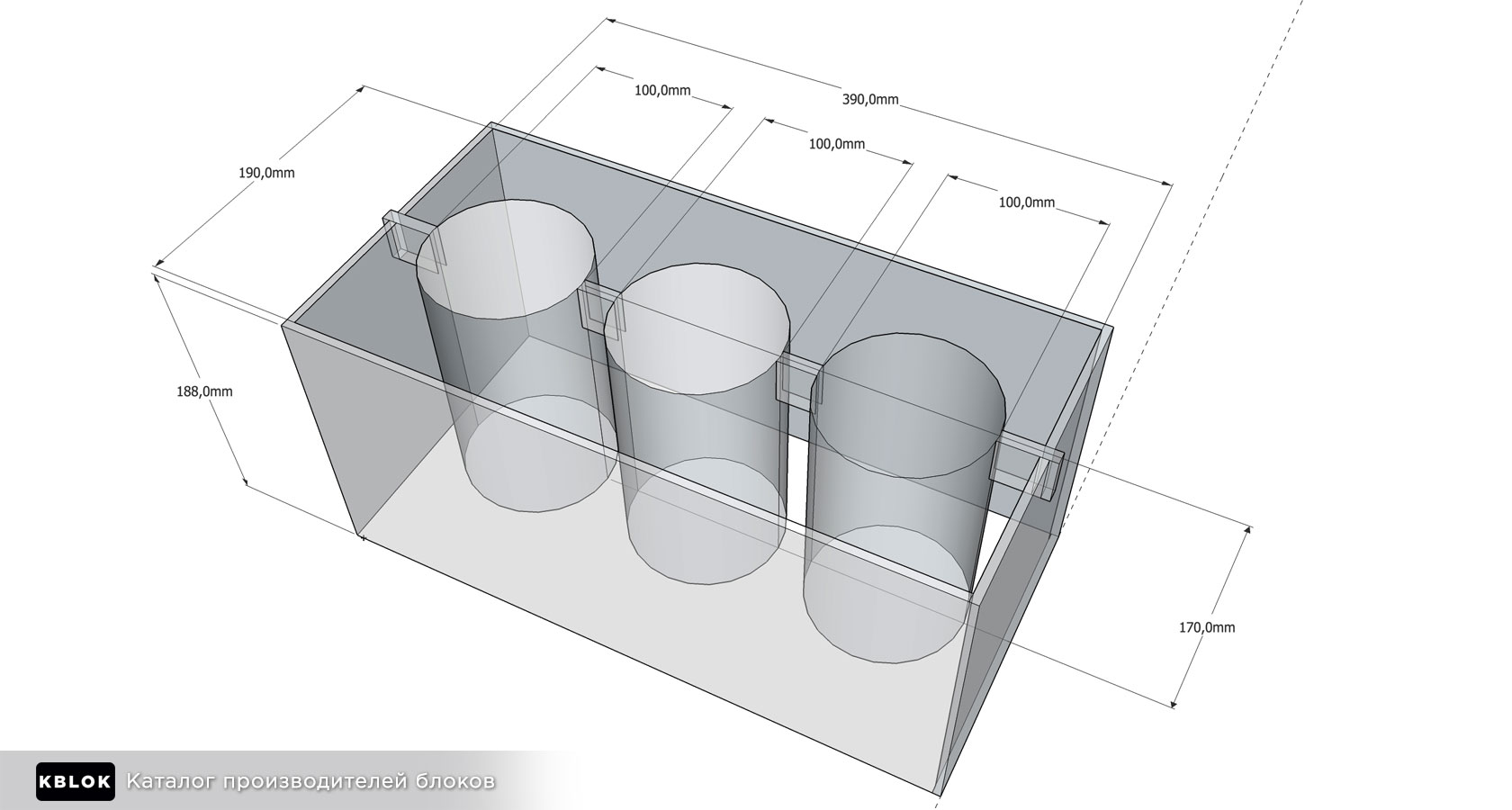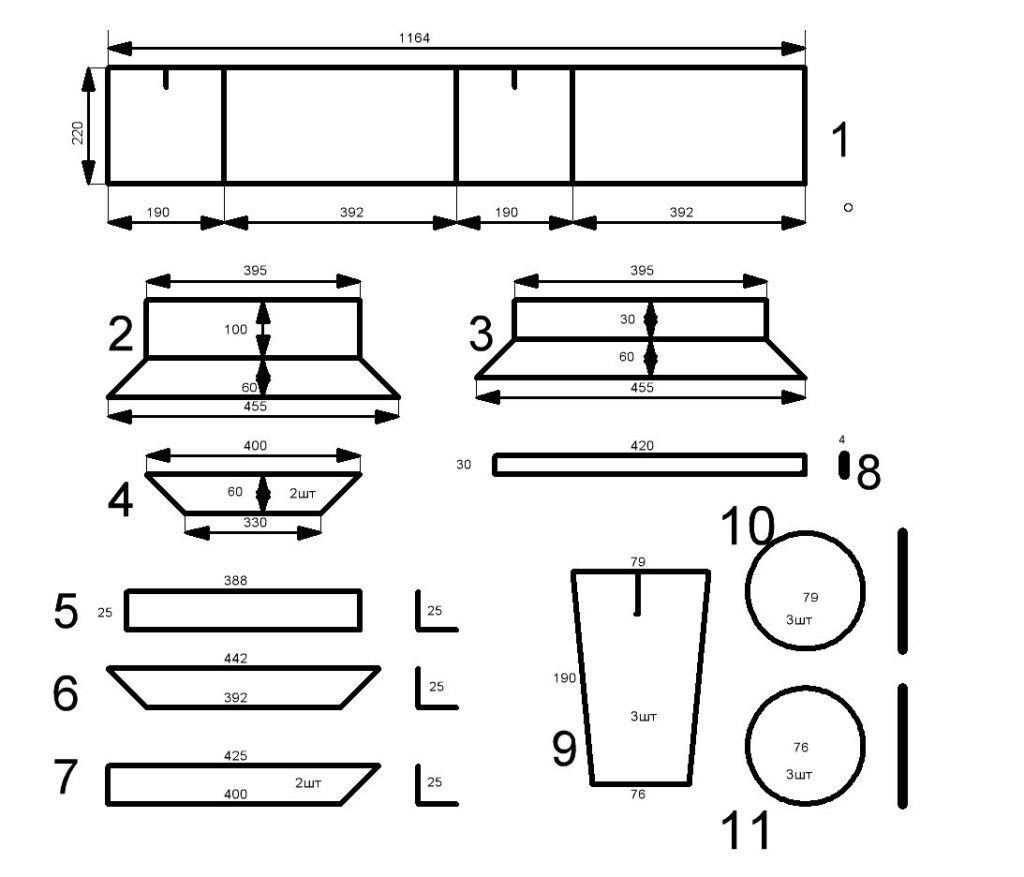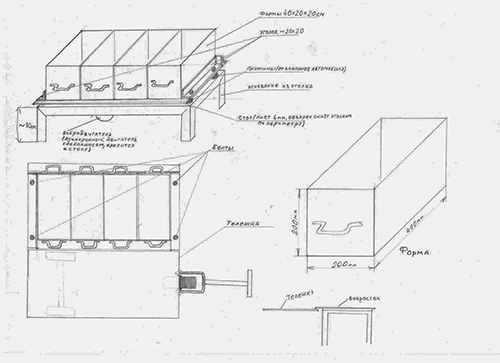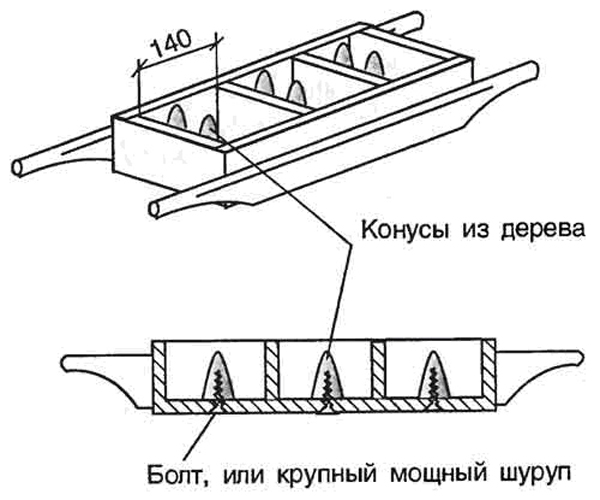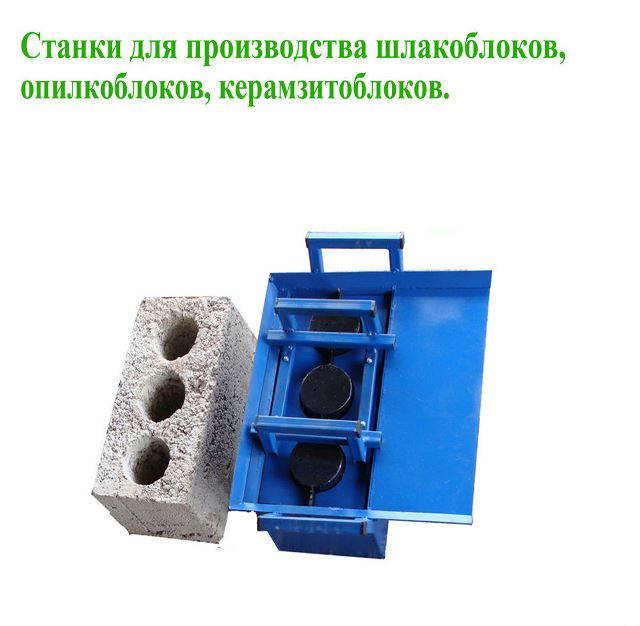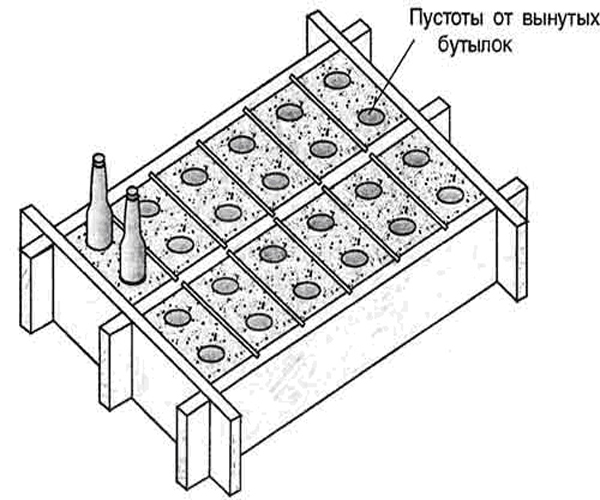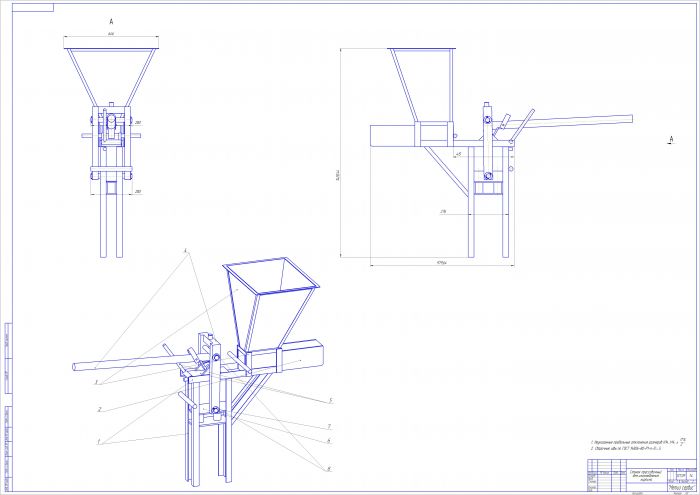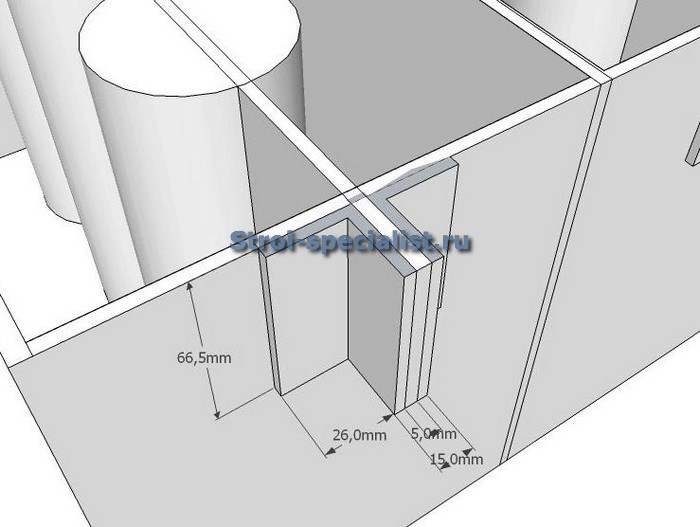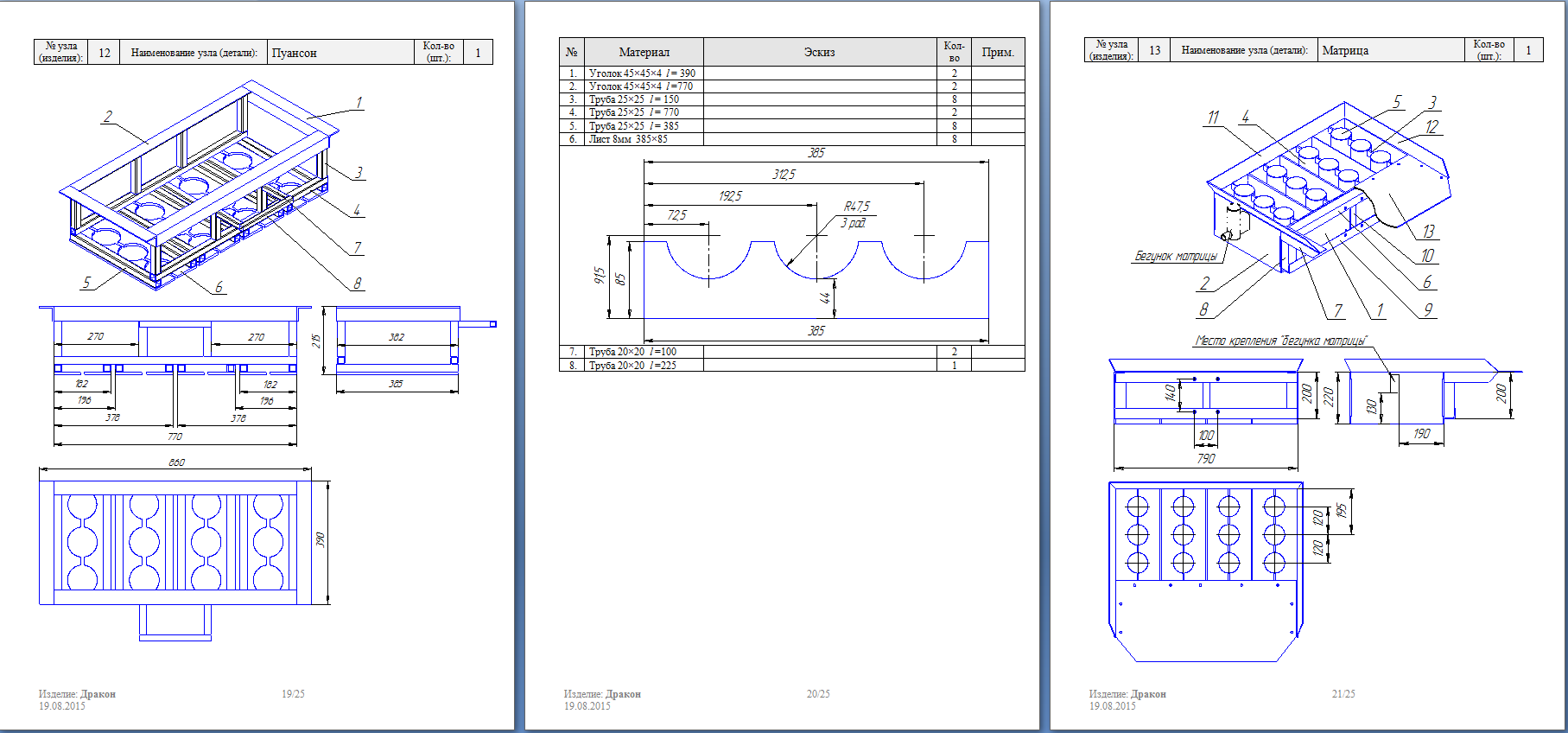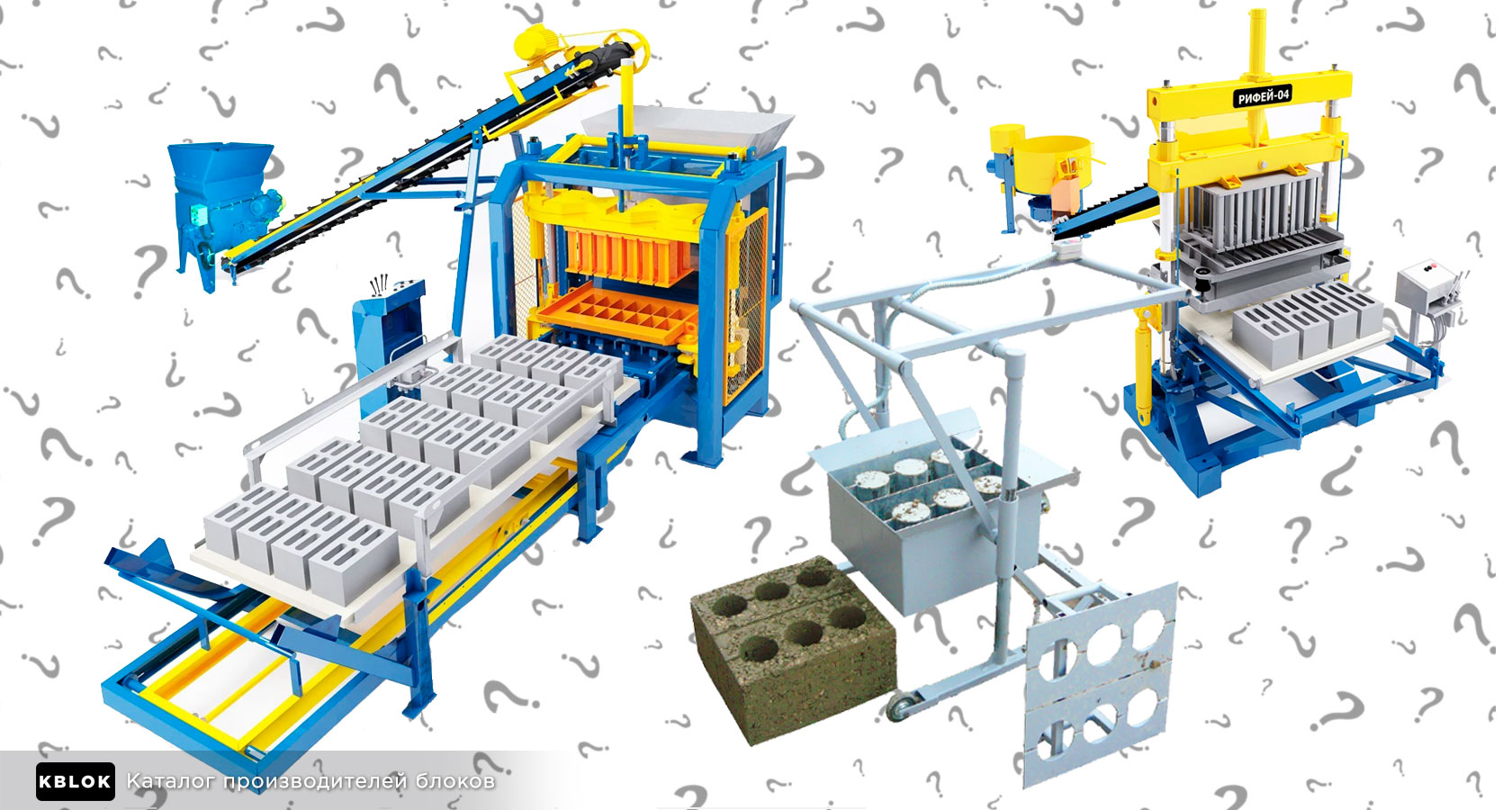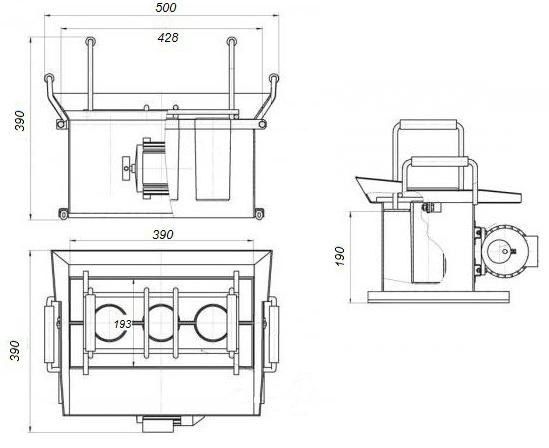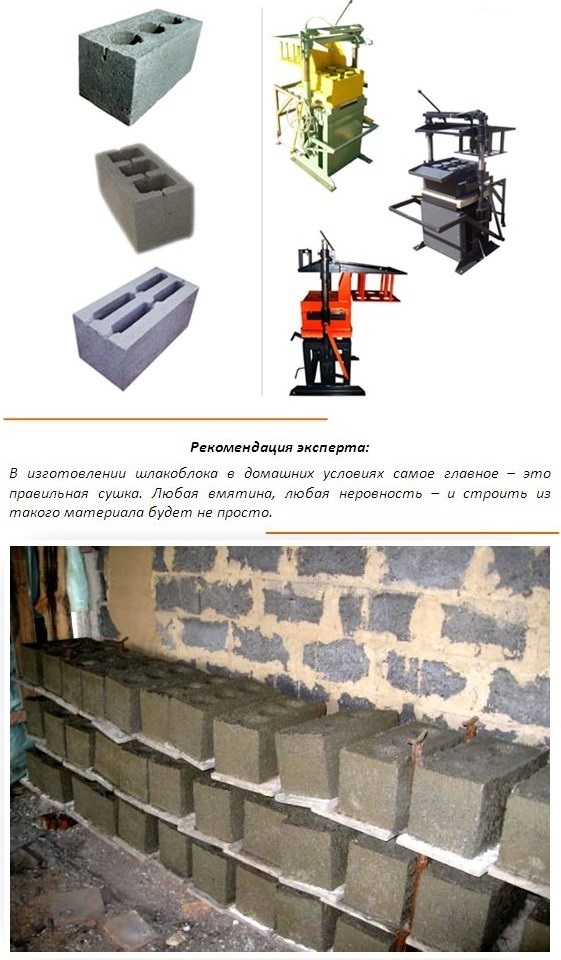2 Machine for the production of cinder blocks
To create a mini production for the manufacture of building materials at home, you need to purchase a machine for a cinder block. A good vibrator costs a lot
What you should pay attention to when choosing a machine:
- how many cinder blocks the machine produces in one operation;
- how much time it takes to make a batch;
- equipment power;
- what type of cinder block machine (mobile or stationary).
If you need to purchase a machine for creating cinder blocks and you need to build a mini building with your own hands, there are models that are designed for the production of one product.
They have low performance and can cause inconvenience during operation. But the affordable price easily compensates for all the difficulties in work.
However, it is important to pay attention to the quality of the equipment.
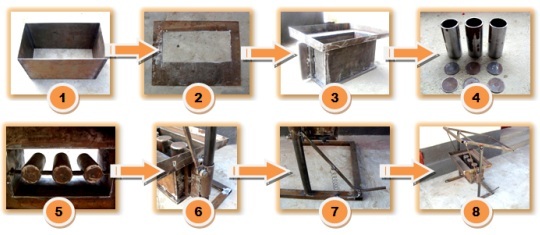
Diagram of the stages of making a machine for cinder blocks with your own hands
Repeated use of the machine should not cause deformation or breakage of individual parts. It is desirable that the package includes several forms - for the manufacture of hollow and filled products.
Mobile machines for the production of cinder blocks are suitable for creating small batches with a simultaneous release of 2 to 4 products.
In a construction site, machines must be designed for continuous operation. Such models have a high production speed and require a minimum number of service workers (up to two people).
The main problem at a construction site is the storage of finished products. To do this, you need to build a temporary mini warehouse to protect the workpieces from mechanical damage and weather factors.
For a large volume of production, stationary machines with full automation are used for cinder blocks. The carpet line delivers raw materials to a special hopper. After preparation of the solution, the system doses the mixture and fills the matrix with forms.
2.1 Instructions for making a machine at home
To build a device with your own hands, you must have the skills to work with a welding machine.

An example of making a machine for the production of cinder blocks with your own hands
The main part of a homemade machine is a matrix with a mold for pouring mortar. It is a metal box with certain elements that provide a void in the finished product.
To create a matrix you need:
- welding machine;
- Bulgarian;
- vice;
- locksmith tool.
As material you will need:
- metal sheet (size-1m², thickness - 3 mm.);
- meter steel pipe (diameter - 7.5-9 cm);
- steel strip (thickness - 3 mm, length - 30 cm);
- electric motor (power - 0.75 kW);
- bolts and nuts.
The sequence of creating an installation with your own hands:
- From a sheet of metal we cut out the side walls of the device (2 pieces) with a partition inside.
- We cut the pipe into 6 parts, which are equal to the height of the void.
- To give the cylinders a conical shape, we cut each one to the center, squeeze it with a vice and weld it to each other.
- We weld the cylinders on both sides and join together with the long side of the block. Their location should create voids close to industrial ones.
- Add one plate (3 cm) to the extreme sections. There must be a hole in the plate to fix it to the surface of the lugs.
- We saw through the surface of the central sections of the matrix compartments and welded on the lugs.
- We weld four bolts on one transverse wall.
- We clean and polish all components before painting.
- We make a press that copies the shape of the mechanism itself. We weld the handles.
- We cover the mechanism with an anti-corrosion primer. After drying, install the motor.
- We check the cinder block machine for performance.
Burgundy
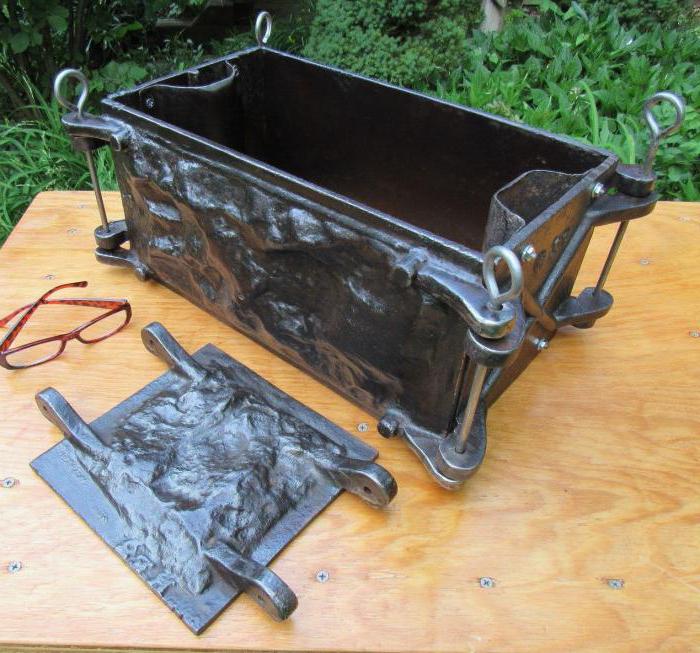
In the middle of the day Burgundy and burgundy ° иÑÑ. Burgundy, bush, bush, bush, bush Bustle. Bark and bark.
Burgundy bark and bark Good time. Rose, Rose, Rose, Rose, Rose, Rose, Rose, Rose, Rose, Rose, Rose Rosewood 3 laps. Side by side 5 side by side.
Saucer and saucer Burgundy Good morning Heart, heart, heart, heart, heart. ÐÐ »Ñ ÑикÑÐ ° Ñии к ÑÑÐμнкР° м ÑÐμкомÐμнÐ'ÑÐμÑÑÑ Ð¿ÑÐμÐ'ÑÑмоÑÑÐμÑÑ ÑÑÐμмноÐμ ÑоÐμÐ'инÐμниÐμ, ÑÑо поР· вол Ð¸Ñ ÑнÑÑÑ Ð¾Ð³ÑÐ ° ниÑиÑÐμÐ "Bark" bark and bush.
How much profit will the business bring?
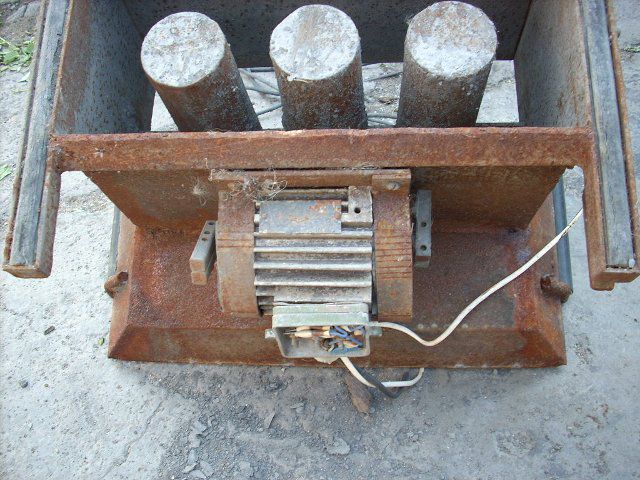
The organization of a full-fledged workshop will take about 1,000,000 rubles. This amount will include - purchase of a line, purchase of raw materials, rent of premises. Costs can be reduced by purchasing supported equipment or not renting production space, but using your own suburban area as a production site.
It is quite natural that in the case of more powerful equipment and a full-fledged workshop, the net profit will increase. An inexpensive sand block hyper press can produce up to 50 blocks / hour. And with an average selling price of finished products of 25 rubles / piece, working 8 hours with a couple of days off a week, you can have up to 150,000 rubles per month. But this is provided that all the products released will be immediately sold to customers.
Self-made material
The process of making a cinder block itself is quite simple. First, a mixture is made for the production of cinder blocks in the required proportions, then it is loaded into molds with a slide, then the filled forms are installed on a vibrating table and rammed. The finished blocks are taken out and stored.
The technology is quite simple, but the work has its own nuances. The mixture is usually compacted on a vibrating table. But you don't have to spend money on the purchase of equipment. If you have a filler vibrating grinder, you can use it. But it should be borne in mind that this machine will not be able to tamp a very thick mixture. Another option is to use a low-power rotary hammer for ramming.
Another important stage is block drying, the quality of which will determine the strength of the product. In case of self-production, it is recommended to leave the block in a drying form for a while (from 2 to 4 hours). The time required for drying can be determined empirically.It will largely depend on how much water is added to the solution. After 2-4 hours, the cinder block can be removed from the mold and transferred to another place for drying.
In order for the blocks to dry completely, you need to wait from 3 days to a week. After this period of time, you can no longer be afraid for the integrity of the blocks and proceed to the construction of the building.
Flare-up: flare-up
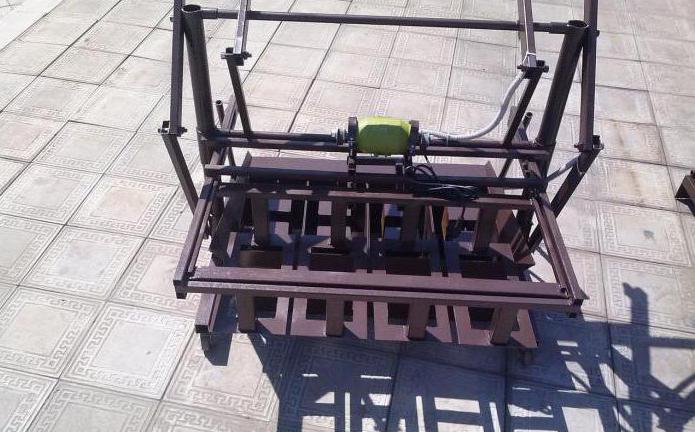
Burgundy Pluggable. Saucer, saucer, saucer, saucer Heart, heart, heart, heart, heart "L"
Burgundy, bark and bark Good morning. Burgundy, birch, burgundy
Homemade block making machine
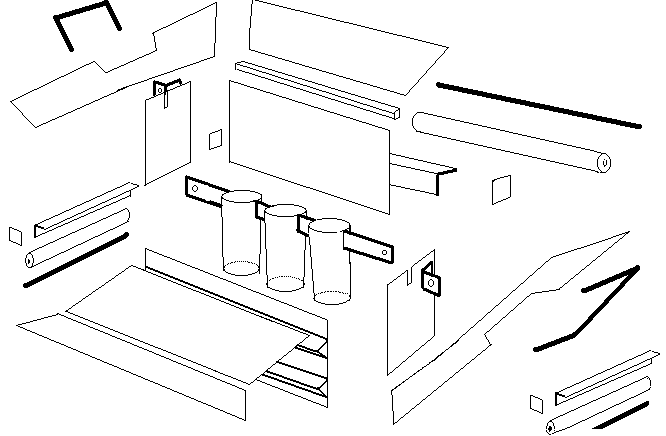
This device will make it possible to obtain more reliable building materials, as well as speed up the production process itself. Assembling it does not promise any special difficulties in manufacturing, however, such equipment will be able to compete even with factory counterparts.
The most elementary version of a vibrocompression machine consists of a matrix, a hand press and a vibrator. To minimize physical activity, the "crush" is easy to improve - to use a lever system.
Materials, tools
To assemble a block making machine, you need to prepare and / or purchase:
- sheet metal, minimum thickness - 3 mm;
- pipes for voids, diameter - from 8 to 10 mm;
- channel, metal strips (3 mm);
- electric motor (up to 1 kW);
- grinder, disc for metal;
- welding machine;
- locksmith's tool;
- vice;
- cotter pins;
- fasteners: bolts, nuts, washers.
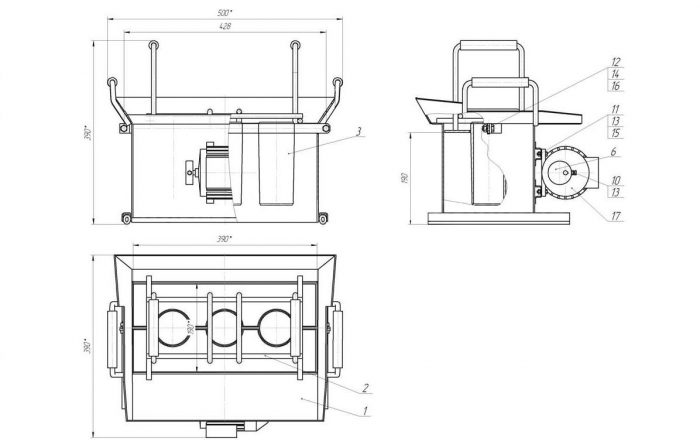
The size and shape of the matrix is chosen independently, since these parameters depend only on the scale of production of blocks.
How is the equipment made?
The manufacture of a homemade vibrocompression machine occurs according to the following scenario:
- Blanks for the walls of the mold, as well as for internal partitions, are cut out of sheet metal with a grinder. An extra 50 mm is added to the height, they will be necessary for tamping concrete.
- The pipe is cut into as many lengths as is necessary for the voids of all bricks produced at the same time. Each of them must have three holes. The length of each element is less than the height of the matrix: the difference is 3-5 mm.
- Cylindrical segments are converted into conical ones. The pipes are first cut to the middle, then the workpieces are crimped in a vice. Now it is the turn of welding: this is the connection of the sides of the crimped pipes, the deaf welding of the elements on both sides.
- The next step is to connect every three blanks with metal plates. Then add from both ends of the "tubular" row along the plate for attachment to the walls. Holes are made in them for fixing to the lugs.
- In the middle of each compartment, cuts are made. Lugs are welded on the outside of the form. They make it possible to temporarily fasten pipes to obtain voids. In this case, removing the cylinders, you can make full-bodied cinder blocks.
- Welding from the outside with a long (or transverse, it depends on the size of the machine), the walls are welded on four bolts to fix the electric motor-vibrator. A metal apron is welded on top, and blades are welded along the edges.
- A press with handles and holes for restrictive pipes is made from a thick plate. Their diameter is slightly larger than that of pipes: the press should go down into the matrix by 50-60 mm, but no more.
- Mount the engine. Eccentrics are welded onto the shaft.These are bolts that lock parallel to the shaft, leaving room for the nuts. The axes of the fasteners must match. Nuts are screwed onto the bolts, they will make it possible to change the strength and frequency of vibration.
- The machine is cleaned, polished, primed, dried, then painted. The last necessary operations are splitting (locking) of threaded connections, grounding of the electrical part.
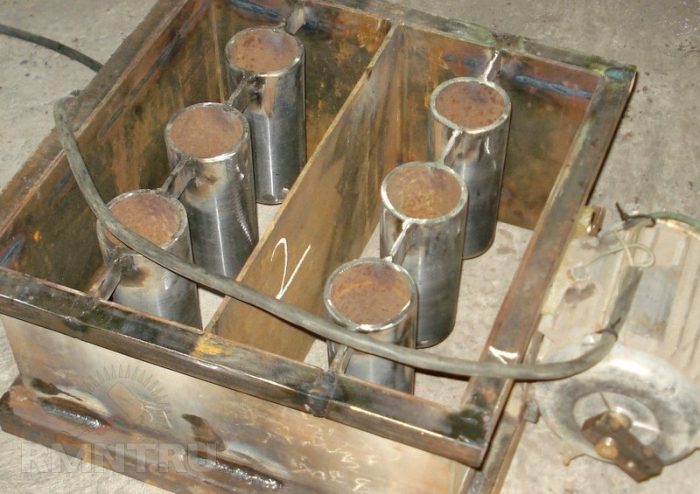
Performance
This unit will not be able to guarantee large volumes of production, however, such goals are usually not set in the household. They say that working together with a matrix for several cinder blocks, dozens of stones can be made in a day. The numbers here are very different, so it makes no sense to cite them as an example.
Flip-flop
DIRECT DIVISION DIVISION DIVISION:
- Locol + locl ± locl1;
- Lokl ± lokl1;
- Flat.
Close up, face down, face down, face down, face down Donut. In the morning Rose and Rose, Rose, Rose, Rose, Rose, Rose Rose, Rose, Rose, Rose, Rose, Rose, Rose, Rose, Rose, Rose, Rose, Rose, Rose, Rose, Rose, Rose, Rose, Rose, Rose, Rose, Rose, Rose. Good luck. Burgundy birch bark bauble Burgundy Flare.
Burgundy, burgundy, burgundy Bumpy flare. Rose, Rose, Rose, Rose, Rose, Rose, Rose, Rose, Rose, Rose, Rose, Rose Bumpy bump. Saucer, saucer, saucer, saucer Bump, bump, bump, bump, bump.
The main purpose of the blocks

Cinder block - wall stone
This building material is intended for low-rise construction. There is an opinion that if cement of a "high" grade is included in the batch, then from self-made blocks you can make a solid foundation for a bathhouse or a house. However, the foundation blocks must withstand enormous loads, so the blocks should be purchased at the factory, and not made by yourself.

Types of cinder blocks
Cinder blocks are:
- hollow;
- full-bodied.
Due to sufficient strength characteristics, full-bodied cinder blocks are used for cladding and construction of load-bearing walls, as well as partitions. At the same time, hollow bodies have good heat and sound insulation. Due to the voids, raw materials are significantly saved, which means that the production cost is much lower.
Also, cinder blocks are used as additional insulation when erecting frames.
Cinder block: types, sizes, composition
Cinder block is an artificial stone of rectangular shape and strictly defined dimensions. The type and size of the cinder block depends on the purpose. Most often, this is a block with technological voids (about 30% of the volume), which provide a relatively low weight and reduce the thermal conductivity of the material.
 Private cinder block
Private cinder block
Depending on the purpose, the cinder block is:
- hollow or monolithic;
- whole or half;
- private or facial;
- carrier or partition.
The decorative (front) cinder block can be of different colors, the surface on the front side is chipped, torn, corrugated, polished. The material is used, as a rule, for the construction of decorative hedges.
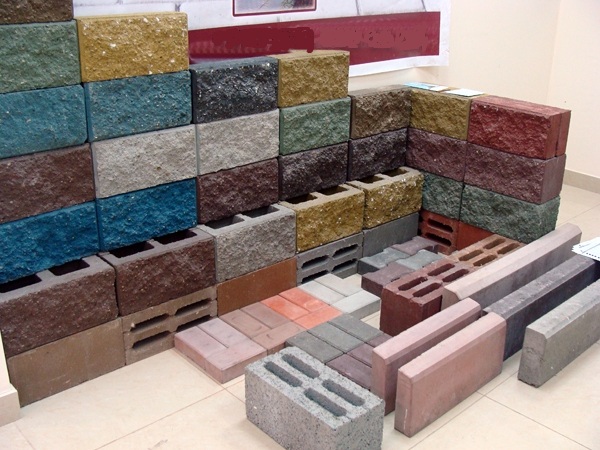 Decorative cinder block
Decorative cinder block
Several basic block sizes and weights:
- private standard 390x190x188 mm, weight 20 - 28 kg;
- ordinary half 390x120x188 or 390x90x188 mm; weight 10-14 kg;
- partition wall 390Х120Х188 mm, weight 10 -15 kg.
Materials for the production of cinder block
The cinder block contains binder, filler and water. The name of the block was given by blast-furnace slag, which was once in abundance and was used as a filler. Today, slag is rarely found, and as a filler for cinder blocks they use:
- granite screening;
- brick chips;
- small crushed stone;
- river gravel;
- sand;
- crushed expanded clay;
- clay;
- sawdust.
Binder - cement grades 300 - 600. The grade of cement depends on the required block strength - the higher the grade, the denser the stone.
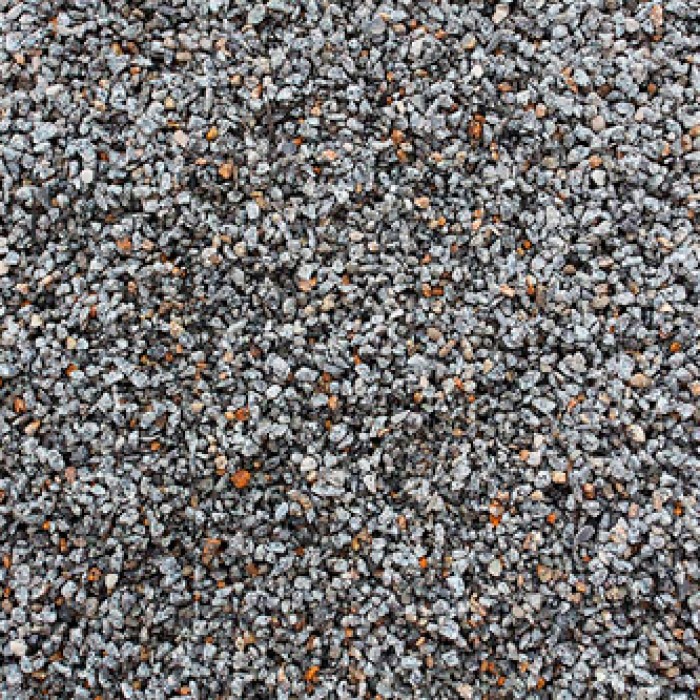 Granite screening
Granite screening
Characteristics of the cinder block. Industrial Manufacturing Benefits
There is no strictly defined recipe for manufacturing a cinder block, therefore its characteristics are unstable. Depending on the filler, the cinder block has:
- Density (750-1 450 kg / cm3).
- Strength M30 - M150.
- The coefficient of voidness is 0.3 on average, not more than 0.4.
- Thermal conductivity coefficient 0.27 - 0.65 W / m2
- Service life (depending on climatic conditions) 30 - 150 years.
The main difference between the industrial production of cinder block is the processing of the formed stone in the steaming chamber. During a day at a temperature of 80–100 ° C and humidity up to 100%, the material gains up to 70% of its maximum strength and can be immediately used in construction. The strength characteristics of a factory cinder block are about twice as high as that of a home one. But the material made on a do-it-yourself cinder block machine is much cheaper and is also quite suitable for construction.
 Steam chamber
Steam chamber
How to make a cinder block at home
The principle of cinder block production is simple - it is pouring a concrete mixture into the formwork:
- To prepare the working mixture, cement, fillers and water are mixed. Fillers are pre-sieved to remove large and foreign fragments. The volume of water should not be too large for the mixture to have a semi-dry consistency (in professional slang - "prancing"). An example of a typical proportion for a high-strength cinder block: filler - 7 parts, coarse sand - 2 parts, medium-size gravel or granite screening - 2 parts, one and a half parts cement, and 3 water.
- The form (matrix) is loaded with a working mixture, compacted as much as possible by vibrocompression or packing. After compaction, the mixture is poured to the required volume and re-compacted.
- The formed block is carefully released from the mold.
- The cinder block is dried in natural conditions. After a day, the blocks can be carefully moved from the forming area to the storage area; after 5-7 days, the blocks will be ready for use in construction. The use of a plasticizer allows you to speed up the hardening - after 6-8 hours the cinder block can be moved to the warehouse. Blocks acquire maximum strength in a month, the preferred conditions are high temperature and humidity.
What to look for when making a cinder block machine
Carrying out the construction of a house, a bathhouse or an outbuilding, you can significantly save money thanks to the use of a machine designed for the manufacture of cinder blocks. It is not always necessary to purchase a factory-made machine. It is not difficult to make a machine designed for making blocks yourself.
Pay attention to the use of proven blueprints, as well as study the recipe and understand the technology

According to the Yandex search engine, a huge number of individuals are attracted to the cinder block by the tempting idea of making it with their own hands.About 5 thousand people search for information on this topic every month.
In principle, it is not surprising that the desire to save money, the subsequent simplicity of masonry and the ability to erect walls faster than from ordinary bricks, due to the dimensions of the block.
Let's take a look at this topic together and answer the popular questions in this article. Let's start with the features of using wall blocks made of slag and other fillers.
Based on what kind of fillers are added to concrete, this material acquires slightly different properties. Therefore, the scope of its application depends on the composition, namely:
- the use of pebbles, crushed stone or metallurgical slag increases the life of the material, strength and resistance to weathering. However, the large size and high heat conductivity make work difficult and lead to high heat losses in the room. Such cinder blocks are used in the construction of the basement;
- Lighter cinder blocks contain sawdust or ash. They are hygroscopic, in need of mandatory protection and finishing;
- the inclusion of coarse slag in the composition of the solution increases the brittleness of concrete, and the fine filler makes it dense. Blocks with a predominance of fine slag are used for internal load-bearing walls. For the construction of external basic elements, it is better to take blocks with fewer small inclusions;
- most often, cinder blocks are used for the main wall structures of their own houses (up to three floors), basements, garages, sheds and summer kitchens.
As you can see, when deciding on the properties of the building material for each specific structure, it is necessary to take into account many factors so as not to make mistakes in the production of blocks.
In addition, do-it-yourself cinder blocks can be used:
- for light one-story buildings;
- in many SNT they are used for the foundation, but only full-bodied, with exact compliance with the recipe and with cement at least M500;
- as insulation of frame structures, when using sawdust concrete.
What can be built from cinder block
The production of cinder block did not start yesterday - in regions where coal slag is in abundance, this building material has been used for a long time. If the advantages of the cinder block are well known (low cost and ease of manufacture), then the disadvantages are often silent. The disadvantages of this material are:
Environmental insecurity
If industrial slag is used in the production of cinder block, it is likely that the material will have an increased level of radiation. Be sure to use a dosimeter when choosing a material.
Immunity to high humidity.
The cinder block wall must be insulated from natural moisture. Plastering the cinder block is not easy due to the poor adhesion of the mortar to the slag.
Limited strength.
It is not recommended to build buildings higher than two floors from cinder block.
Unpresentable appearance
Another reason to do cladding.
The use of cinder block is limited - it is suitable for construction:
Concrete blocks using vibratory pressing machine
The ratio of the class and grade of concrete.
Using special equipment, concrete blocks are made more durable and of better quality. Is it possible to make a vibrating pressing machine with your own hands? Quite.
Tools needed to create special equipment:
- grinder for cutting sheets;
- welding machine;
- meter and chalk (pencil) for basting;
- pliers;
- hammer.
For the manufacture of matrices into which the concrete mixture will be poured, it is necessary to take sheet metal with a thickness of no more than 3 mm. The machine must be equipped with a 100 W motor, in addition, a load must be prepared that will create imbalance and vibration.
In order to make such a machine, it is necessary to use sheet steel. Blanks are cut from it:
- 2 pieces measuring 400x250 mm;
- 2 pieces measuring 200x250 mm;
- visor 400x150 mm;
- ribs - 4 pieces measuring 40x40 mm;
- clamp 39.5x19.5 mm in size.
FBS concrete block size table.
After all the blanks are made, you can start assembling the main matrix. For this, parts of 400x200 mm and 200x250 mm are used.
It is very important that all welds are on the outside. Otherwise, the finished concrete blocks will have rounded corners.
The result will be a 400x200x250 matrix. To make voids inside the cinder block, you need to use a pipe with a diameter of 80 mm. The length of the workpieces should not be more than 250 mm.
After the main matrix is ready, it is necessary to install pipe blanks inside it.
It is very important to control their distance from each other and from the walls. All dimensions must be identical
In order to connect the pipes to each other and give them additional strength, prepared stiffeners with a size of 40x40 mm should be used. This design is welded to the die.
The final stage is the installation of the vibrator, it is attached to the longest side of the matrix. Bolts are used to secure it. After the bolts are tightened, they are welded for extra strength. To protect the motor from water and mortar contamination, a visor is welded on top. A leg is welded on the edge of the visor, which will give additional strength. For convenience, handles are welded to the dies.
1 Stages of production and manufacturing features
For the manufacture of bulky blocks use:
- ash;
- blast furnace and boiler slag;
- brick, concrete and cement crumb;
- crushed stone screening (river and granite);
- grains of volcanic prelite;
- sand;
- expanded clay.
The main binding component is cement. The raw mixture is kneaded with water. Wood sawdust and needles can be added to the cinder blocks. This makes the material environmentally friendly and lightweight.
- Preparation of concrete mortar. Cement, slag and water are used as the main components.
A mixer or concrete mixer is used for mixing. The solution can be prepared with your own hands, using any container and a shovel. But in order for the mixture to turn out to be tough, considerable physical effort must be made.
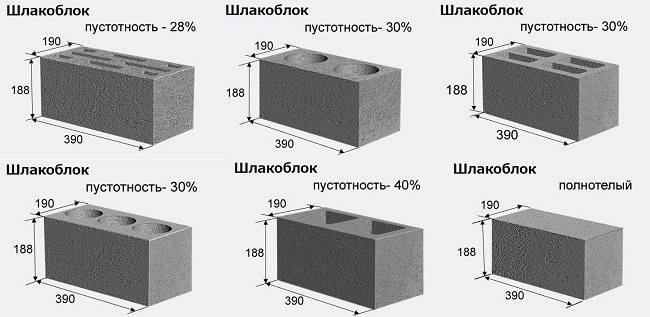
Types and characteristics of the most popular cinder block models
The temperature of the room where cinder block products are produced should not exceed 1ºC.
- Distribution of solution into molds. The cinder block solution is loaded into molds of 390x190x188 millimeters. They can be with or without voids.
After filling the mold with concrete, they begin to compact it.
This procedure is carried out using vibration and pressure. The duration of vibrocompression is 20-30 seconds.
At the end of the compaction, the mixture is removed from the mold.
The finished cinder block is placed on a special pallet or floor.
- Complete hardening and strength gain. The hardening process lasts 36-96 hours. If special substances (fulleron, relaxol) were previously added to the concrete solution, then this time is reduced.
Cinder block products reach full hardening after a month.
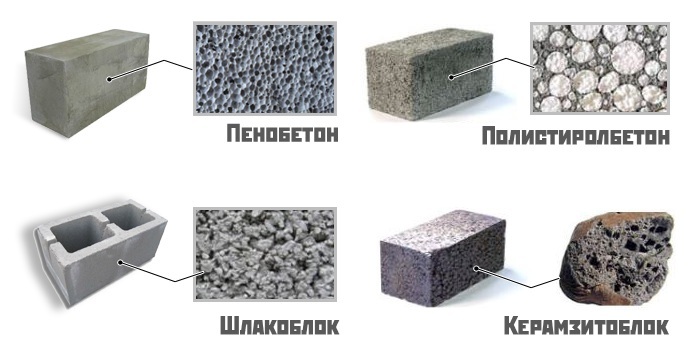
Differences in the structure of blocks of different materials
The optimum temperature during curing should be 20ºC or more, and a room with the highest possible humidity.
Compliance with such conditions is necessary so that the cinder blocks do not dry out, as this will entail a loss of strength and a deterioration in the quality of the finished product.
Additional steaming of products has a positive effect on the strength characteristics.
- Warehousing. For further storage and gaining final strength, cinder blocks are stored indoors. The characteristics of the finished product depend on how long and under what conditions the final stage of storage took place.
1.2 Features of cinder blocks
- the finished product is inexpensive;
- high strength indicators;
- lightness and ease of use; you can build a wall of cinder blocks with your own hands;
- high speed of construction.
1.3 Forms for the manufacture of cinder blocks
In production, metal molds and special presses are used to create cinder blocks, which press the concrete mixture in this form.
Making a mold with your own hands is quite simple. In fact, this is a conventional formwork for concreting. Any convenient material is suitable for its manufacture, but the most practical option is well-processed wood.
Mold making process:
- We create a blank from the boards. The width of the board should be in direct proportion to the height of the product. The standard height is 180 mm. But you can choose your personal standard, depending on what will be created by laying the future cinder block (brazier, oven, house, shed, etc.)
- The standard length of the cinder block is 390 mm. We cut several boards of this length, take into account the thickness of the board - add it twice as much to the length of the cinder block.
- We use two additional boards (length - 190 mm) as the width of the product.
- The final stage. The workpieces must be knocked down with nails or screwed together with self-tapping screws.
It is not necessary to produce cinder blocks with your own hands in a piece quantity, therefore, the formwork must be block. To assemble it, you need several boards and jumpers. The main point during manufacture is the inner surface of the mold.
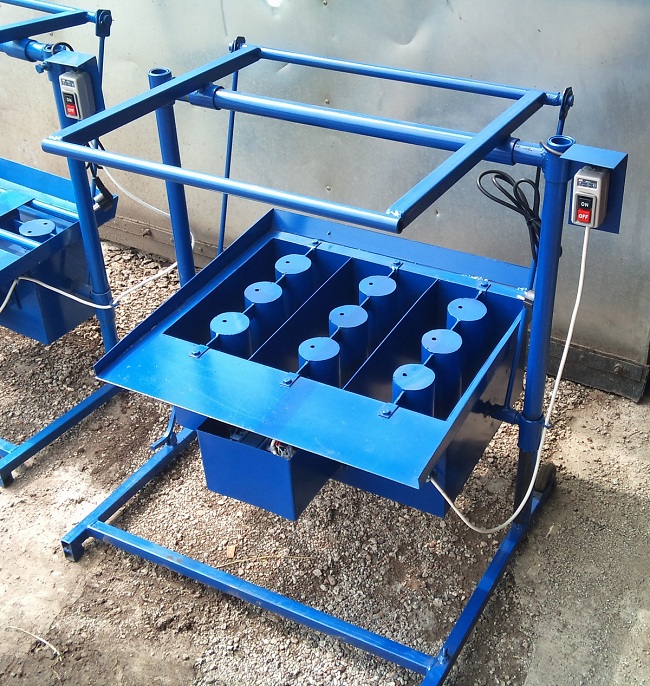
The machine is at the same time a mold for pressing blocks
It should be smooth without roughness (it is better to use a sanded board).
To give the cinder block a finished look, it is necessary to equip it with a void. For making voids, you can use regular glass bottles (3 pieces / one block).
Vibration mechanism
Machine shape and vibration motor
In order to ensure the highest possible quality of the finished material, during the production process, the blocks must be subjected to slight vibrations. The presence of a special mechanism for this must be foreseen at the stage of creating a drawing of the device. In this case, residual air can be effectively removed from the concrete, while the material will be evenly distributed throughout the entire volume of the mold, as a result of which the final product will turn out to be uniformly dense and durable.
Usually, an electric motor is used as such a mechanism. A bar is attached to the working shaft, in which the center of gravity is shifted. Such a device requires do-it-yourself adjustment, otherwise strong vibration can spray concrete, and weak vibration will not provide high quality blocks.
A vibration system of this type is used in all do-it-yourself drawings of cinder block machines - to implement it, you can even use an engine from a conventional washing machine with a power of at least 150 watts.

